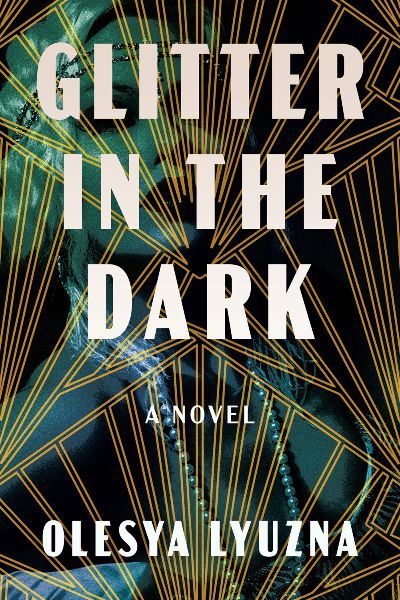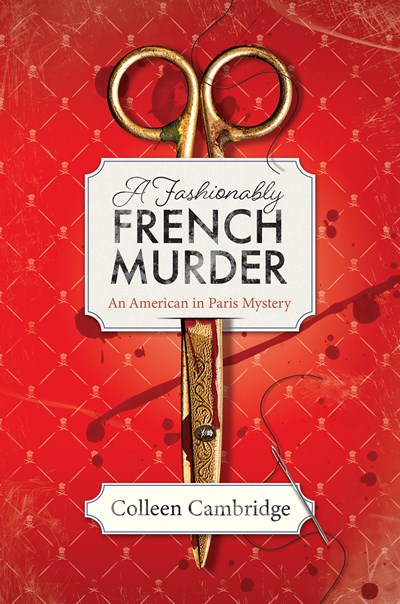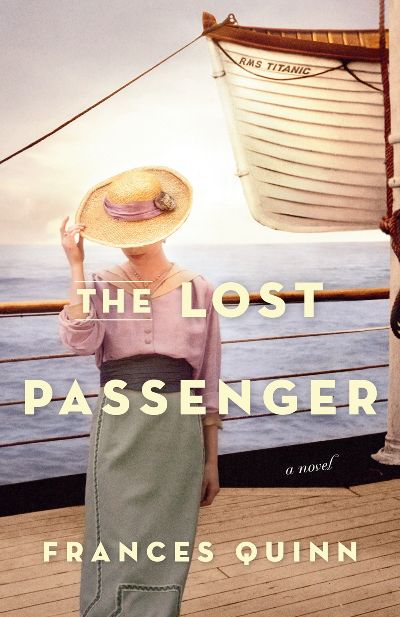They’re back! The trained assassins readers first met and loved in Killers of a Certain Age (2022) are on another mission, but things are odd this time. The group of women, which resembles nothing so much as a book club that’s enjoying itself a bit too much, is summoned to a new job, but given tickets for coach airfare…decidedly not the style they’re accustomed to. The usual impeccable preparedness is lacking in other ways, too—no backup murder weapon provided? What is this?—and things go completely off the rails—pun intended, as the worldwide escapades after looted art and to flee revenge end up with the women on a lethal train journey through Montenegro. The Bond-type exploits are exciting and the art-history details absorbing, but as in the previous book, it’s the realistic friendships and love—including same-sex romance—that will keep readers wanting more from Raybourn. An invigorating read that will lift readers’ spirits.
Review
A strange discovery in an Air and Space Museum makes the scientists in Scalzi’s (Starter Villian, 2023) latest think a theft has occurred: a moonrock on exhibit is switched with something that appears soft and squishy. When scientists and astronomers realize the moon has somehow grown in size, but the mass is the same, the truth dawns on them. The moon itself is no longer made of rock, but of cheese. Scalzi takes this absurd scenario and showcases the various related people and occupations to highlight how a cheese moon would affect the world. Scientists can’t explain it. Conspiracy theorists see this as proof that man never landed on the moon. Astronauts scheduled for a lunar landing must now scrap their plans, and even cheese-shop owners have their hands full, given the increased interest in their products. Factor in global complications with possible changing tidal patterns and the religious aspects with questioning if God somehow made this happen, and, no surprise, chaos reigns. If you are ever curious whether drowning by cheese is worse than drowning by molasses, this book is perfect. Scalzi’s trademark humor and a genuinely baffling puzzle keep the pages turning. This fun, engaging read is perfect for these tumultuous times.
We are taken back to the roaring ’20s, to speakeasys and the Ziegfeld Follies, in this gritty noir with Ginny Dugan as our main character and sleuth. She and her dancer sister have come to New York from Kansas. Dottie, the sister, dances for the Follies, and is engaged to Charlie, a financial guy from home; Ginny writes an advice column for Photoplay, though keeps angling for real, hard-nosed reporting. Ginny is out partying at a speakeasy when she’s a witness to the kidnapping of Josephine, a headliner who is Black, but her story is not believed. People are dying of heart attacks in Harlem dance clubs, and dancers are reporting ghosts in the dressing rooms of the Follies, young women who have been murdered. There are drug stashes and secret crime bosses. Ginny partners with Jack, a detective, but it is Gloria, a Follies star, who calls to her heart. The level and complexity of the crime speaks to a mastermind: the Eagle, whose identity is unknown until the end. This debut turns back the clock with authentic detail and sharply drawn characters and a strong sense of violence and lawlessness. A challenging book.
Expat Tabitha King—formerly of suburban Detroit—is living, as the kids would say, her best life. She’s upped and moved to post-war Paris—she’s bilingual thanks to her mother and French grandmother—and this third, and best, in the mesmerizing “American in Paris” series finds Tabitha hanging out with her chum Julia Child, from whom she picks up some much-needed cooking tips. She’s also settling disputes between her Grand-père and his partner, Oncle Rafe (they are reopening a restaurant, thus the agida) and dipping her toe in the heady world of haute couture, with Christian Dior, who makes a cameo appearance, leading the way with his “New Look.” But when Tabitha discovers a body in one of the exclusive fashion ateliers, all the frothy fun comes to a halt, or at least a sputter, as Tabitha, with the sometime help of the all-too-handsome Inspecteur Merveille, throws herself into the search for the murderer. It’s a search that takes Tabitha back to Paris during the Occupation and the work of the Resistance against the Nazis and the French Vichy government, as well as those whose role was less clearly defined. Rich in history, full of the value of friendship and family, and with a very, very slow-growing romance (we want more, Colleen!) this is certain to be one of the best mysteries of 2025.
Santa Clara University hosts an annual Parents Weekend for students’ families. In Finlay’s latest thriller, he showcases five families with baggage, from students hiding secrets to their parents with facades created to ignore reality. This generational mess creates a drama school larger than anything New York or Los Angeles universities have ever seen, with dysfunction ruling the day. The parents and youngsters are supposed to attend a dinner event together, but only the adults show up. Numerous calls and texts to the kids go unanswered, and the worries grow. An accidental drowning of a student a couple of days earlier may hold the key. FBI Special Agent Sarah Keller arrives to find answers. Keller was seen in Finlay’s earlier novels Every Last Fear and The Night Shift, and fans will be thrilled to see her again, while newcomers will fall in love with her. As Keller talks to the parents of the missing students, she begins to uncover the truth of what each family wants to avoid. Finlay tells the story from the parents’ perspective, occasionally peering into the five missing students’ lives without revealing too much. He crafts a genuine page-turner with a cast of flawed and realistic human characters. Plan a weekend to devour this terrific thriller.
Eight months after a traumatic on-the-job accident almost killed her, George (Georgina) Lennox has been assigned her first case as a newly promoted Glasgow DI: to investigate the suicide of 18-year-old Alan Ferguson on a remote island in the Scottish Hebrides. A disappointed George protests to her boss: “Because nothing happens out there. These islands are medieval time capsules with a population of relics.” Arriving on the stark and barren Eilean Eadar with her partner, Richie Stewart, she finds an isolated community that still clings to its ancient Catholic faith (in Protestant Scotland) and that is deeply suspicious of outsiders. As George and Richie interview the locals, George senses that something is off about the place and its people. Mysterious double spirals are engraved into the village houses and farm crofts. The long abandoned lighthouse where Alan fell is also the site where three lighthouse keepers disappeared mysteriously a century ago. Late at night, George hears the howling of a wolf and spots a masked figure outside her window. Who is trying to thwart the investigation? At the same time, George and Richie clash over the DI’s use of prescription pain medication and her reckless tendency to charge into risky situations without backup. George is a compelling sleuth, tough yet also vulnerable and not always likable, but she has great chemistry with the fatherly Richie. Debut author McCluskey has written a compellingly spooky and creepy mystery with a hint of folk horror à la The Wicker Man. Fans of Ann Cleeves’s Shetland crime novels and Peter May’s Lewis Trilogy will delight in this atmospheric thriller.
Elinor Hayward and her rich, widowed father, a textile millionaire known as the cotton king, are surprised and thrilled to be invited to a high-society ball. Mr. Hayward is a self-made man—the horror!—instead of having been born to wealth like those who usually snub him. At the ball, shy Elinor is rescued by Frederick Coombes, AKA Lord Storton, who seems interested. As is the way in 1910 upper-class London, a formal courtship is soon followed by marriage. Elinor expects a romantic whirlwind like in the Jane Austen novels she adores, but right from the lackluster proposal, things are off, and after they marry, things only get worse. Frederick has no interest in his wife, except as a vessel for the all-important heir. When the couple and Elinor’s father finally board the Titanic along with their baby, it seems like a welcome break from the rules, but we all know what happens. The characterization here is superb. Readers will root for Elinor before she ever arrives on board and will be rapt as she’s thrown into peril while the nightmare unfolds (Quinn offers a wealth of details about the disaster and its aftermath). What follows—Elinor taking the chance to remake herself, always struggling and waiting to be discovered—is also gripping, and this is one of those books that will leave readers bereft once it’s over. A triumph, and surely a movie must be in the works.
Brace yourself. Landau (pseudonym for authors Jeff Ayers and Jon Land) is back with a new National Parks-based thriller, and it’s even more breakneck-speed than the last. This time, several mysteries entwine, starting with the fate of U.S. Geological Survey (USGS) workers who disappear after the reader follows their every panicked move as an avalanche descends on them at the Lamplugh Glacier in Alaska’s Glacier Bay. Michael Walker, a special agent with the National Parks Investigative Services Branch, hero of Leave No Trace (2024) is dispatched to find them, working with Tlingits, Natives whose animosity toward white outsiders has been well earned. At the other end of the country, a USGS intern is found dead, his cause of death seemingly impossible. And the crew of a U.S. Navy submarine finds itself in terrible peril, the claustrophobia and fear seeping off the pages. There are several highlights here, in addition to the fast-paced, dangerous subplots: a respectful look at the Tlingits and their ways, with a show of force by the tribe creating knife-edge suspense near book’s end; a young Tlingit woman, Amka Reynolds, whose scientific know-how and dedication to her community will make her a reader favorite; and the continued look, in protagonist Walker, at a disabled character with a physically active career, realistically hampered at times but getting on with it. For fans of Landau, outdoorsy thrillers, and stories about the effects of technology (you’ll see).
Cleeves, well noted for Vera, Shetland, and others, first wrote a very different series of mysteries that are soon to be newly available in the United States. George and Molly Palmer-Jones are our amateur sleuths. George, retired from the Home Office (we don’t really know what he did while working), and Molly, a retired social worker, make a wonderful team. Steady, trustworthy, George, with authority; warm, sweet, Molly with the ability to get people to talk to her, make an excellent alternative to the police that no one seems to value. Tom French, a young and seemingly popular leader of the local “twitching” community, a group that travels to find rare birds, is found murdered. The father of a local asks George to look into it. The body has been moved and it is not apparent how or why. George, a birdwatcher himself, can maintain a connection to the astonishing rivalries and intrigues involved in this rabidly passionate community, the members of which travel great distances and endure privations at the merest hint of a rare-bird sighting. The lives and personalities of Cleeves’s characters are complicated and unexpectedly overlapping, and while Molly quietly seeks to understand the human aspect of the crime, George travels for information. This is a wonderful example of the genre. The characters are strong and beautifully drawn, and the landscape integral to the story. Best of all, there is a message from the author discussing her circumstances when writing this and critiquing a work that she obviously loves. Happy to say, there will be more to come.
Amanda Flower’s Emily Dickinson series just keeps getting better and better. It’s 1857 and Amherst, Massachusetts is experiencing one of the worst winters anyone can remember. Along with the freezing cold is the fear of chimney fires, and indeed an out-of-control blaze in Kelley Square, the Irish section of town, kills a young family, with the eight-year-old daughter, Nora Rose, the sole survivor. But the blaze has suspicious origins, and Emily and her maid Willa take it upon themselves to investigate. There is a lot going on in this novel, but it is all handled with great deft. Emily’s ongoing reliance upon Willa sets the maid apart from the other household staff, fostering jealousy. The marriage of Emily’s brother, Austin, and his wife,, Susan, continues to deteriorate. Women’s role in society, especially in marriage, is a source of ongoing debate. The future of the now-orphaned Nora Rose, an Irish Catholic girl in a largely Protestant town, and with no relatives, upsets the Dickinson household. Meanwhile, Willa’s own love life takes a dramatic turn. A great choice for book groups, which will appreciate both the book’s breadth and depth. Readers who enjoy this title may also like Mariah Fredericks’s The Wharton Plot and Kate Khavari’s A Botanist’s Guide to Parties and Poisons.










